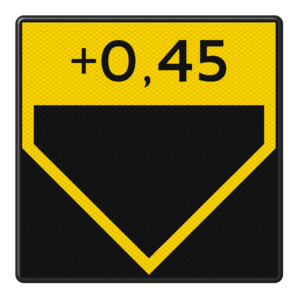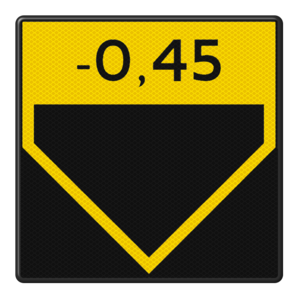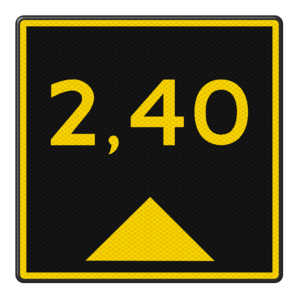Signs to works of art series G - Shipping signs in accordance with BPR
The characters of the G-series are not included in the CEVNI and can be regarded as typical for the Netherlands. No traffic order is required for the application or removal of signs to structures (G-signs). The signs on fixed bridges A.1, A.10, D.1 and D.2 have already been described above in terms of meaning and application.
The actual vertical clearance must be indicated by the waterway manager with height signs or height scales. The vertical clearance is the smallest vertical distance between the underside of the fully loaded bridge and the water surface. With the characters A.10 or D.2 or with the reference character G.5.1b you can indicate over which width this
smallest distance applies or up to which point the smallest distance is present.
If there is a risk of sudden, large differences in water level on the relevant waterway, for example translation waves, these must be charged separately. In that case, it is also recommended to place a height scale at each bridge in channels with an apparently fixed water level.
It is the skipper's responsibility to determine how much margin he wants to keep in relation to the actual air draft. A margin is necessary due to inaccurate knowledge of the height of the ship or cargo, inaccuracy in reading the height scale and possible slight vertical movements of the ship due to waves or variation in speed.
It is recommended to make height scales and front height scales visible at night by means of lighting.














